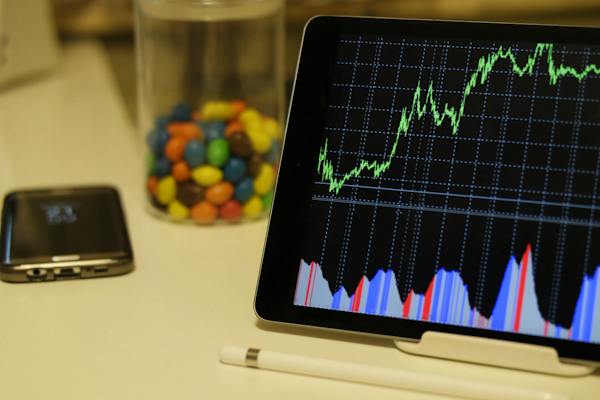Introduction
In the dynamic landscape of web development, embracing predictive analytics has become a game-changer, especially in a bustling metropolis like Dubai. The ability to anticipate user behavior is not just a technological advancement; it's a strategic approach to crafting online experiences that resonate with the diverse and dynamic audience in the city. Let's delve into how predictive analytics is reshaping web development in Dubai, allowing developers to stay one step ahead in meeting user expectations.
Understanding Predictive Analytics in Web Development
Shaping User-Centric Experiences
Predictive analytics is the key to shaping user-centric experiences in Dubai. By analyzing historical data and patterns, web developers gain insights into how users navigate online platforms. This proactive understanding empowers developers to tailor websites according to anticipated user preferences.
Adapting to Digital Diversity
Dubai's digital diversity demands adaptive strategies. Predictive analytics allows developers to adapt websites dynamically, considering factors such as cultural nuances, language preferences, and regional trends. This adaptability ensures a more personalized and resonant user experience.
Content Precision with User Behavior Analysis
Anticipating user behavior enables precise content delivery. Predictive analytics analyses past interactions to forecast content preferences. In Dubai, where cultural sensitivities play a role, this tailored content approach ensures that users receive information that aligns with their anticipated interests.
Navigating Language Preferences
Dubai's multilingual environment requires a nuanced approach. Predictive analytics helps in anticipating language preferences, allowing developers to present content in the most relevant language for users. This foresight enhances user engagement and overall satisfaction.
Adapting to Peak Usage Times
Dubai's bustling digital activity has peak usage times. Predictive analytics anticipates these patterns, enabling developers to adapt websites dynamically during high-traffic periods. This ensures optimal performance and responsiveness, contributing to an enhanced user experience.
Personalization for User Retention
Anticipating user behavior facilitates personalization strategies. In Dubai, personalized content and features enhance user retention. Predictive analytics allows developers to offer recommendations, promotions, or interactive elements tailored to individual user behaviors, fostering loyalty.
Responsive Design Tailored to Device Preferences
Predictive analytics extends to forecasting device preferences. In Dubai, where users engage across various devices, anticipating device preferences is crucial. Developers can ensure responsive design, adapting interfaces to the devices users are most likely to utilize. Anticipating user behavior across devices ensures seamless experiences. Predictive analytics enables developers to create continuity in user journeys, allowing individuals in Dubai to transition effortlessly between devices without compromising the quality of their online interactions.
Dynamic Pricing Models
Adapting to Market Dynamics
Dynamic pricing, facilitated by predictive analytics, is about adapting to the real-time dynamics of the market. In Dubai, where consumer behavior is influenced by various factors, predictive analytics becomes the compass that guides businesses in making timely and data-driven pricing decisions.
Utilizing Historical Data
Predictive analytics analyses historical data to identify patterns and trends. In Dubai's vibrant market, this historical insight allows businesses to proactively adjust pricing based on past consumer behaviors, market conditions, and external factors, ensuring a proactive rather than reactive approach.
Anticipating Consumer Behavior
Predictive analytics enables businesses in Dubai to forecast demand fluctuations. By analyzing historical purchase data and external influences, businesses can anticipate peaks and troughs in demand. Dynamic pricing models can then be adjusted accordingly to maximize revenue during peak periods and stimulate demand during slower times. Dubai's diverse consumer base requires a nuanced approach. Predictive analytics allows businesses to align prices with consumer preferences. By understanding what pricing structures resonate with different segments, businesses can tailor their dynamic pricing models to cater to the varied tastes and expectations in the market.
Real-Time Monitoring of Competitor Pricing
In Dubai's competitive landscape, real-time monitoring of competitor pricing is crucial. Predictive analytics enables businesses to stay ahead by analyzing competitor pricing strategies. This real-time insight empowers businesses to adjust their prices dynamically, ensuring they remain competitive while maximizing profit margins.
Rapid Response to Market Changes
Predictive analytics provides businesses in Dubai with the ability to make rapid responses to market changes. Whether it's a sudden surge in demand or external factors influencing consumer behavior, dynamic pricing models informed by predictive analytics allow businesses to adapt swiftly, maintaining agility in a fast-paced market.
Personalized Pricing Strategies
Predictive analytics enables businesses to personalize pricing strategies based on individual customer history. By analyzing past purchases and behaviors, businesses can offer personalized discounts or promotions. This personalized approach enhances customer loyalty and satisfaction in Dubai's competitive market. Loyalty-driven pricing models are facilitated by predictive analytics. In Dubai, where customer loyalty is highly valued, businesses can use predictive insights to implement pricing models that reward loyal customers. This fosters brand loyalty and encourages repeat business in the dynamic market.
Optimizing Revenue Streams with Predictive Insights
Predictive analytics helps businesses optimize revenue streams by maximizing profits during peak times. By accurately forecasting demand patterns, businesses in Dubai can implement dynamic pricing models that capture the full value of products or services when demand is at its highest. Strategic discounting is also a key element of dynamic pricing. Predictive analytics allows businesses to strategically apply discounts for clearance or promotional events. This ensures that discounted prices align with anticipated consumer responses, leading to effective inventory management and increased sales.
Transparent Communication with Customers
Ethical considerations are paramount in dynamic pricing. Businesses in Dubai using predictive analytics for pricing adjustments should maintain transparent communication with customers. Clear explanations of the factors influencing dynamic pricing help build trust and credibility.
Fair Pricing Practices
Fair pricing practices are an essential ethical guideline. Predictive analytics assists businesses in ensuring that dynamic pricing models remain fair and unbiased. By avoiding discriminatory practices, businesses uphold ethical standards, fostering positive relationships with consumers in Dubai.
Conversion Path Optimization with Anticipated Behaviors
Strategic Adjustment of Conversion Funnels
Predictive analytics aids in strategic conversion path optimization. By anticipating user behaviors, developers can strategically adjust conversion funnels. In Dubai's competitive digital landscape, this approach streamlines the path towards conversions, enhancing the likelihood of users completing desired actions.
Iterative Improvements
User journeys are refined through iterative improvements. Predictive analytics analyses predicted user interactions and feedback, enabling developers to iteratively enhance website features and functionalities. This continuous improvement aligns the website more closely with anticipated user preferences, fostering a seamless journey.
Cart Abandonment Prevention
For e-commerce websites, predicting and preventing cart abandonment is a crucial aspect of web development in Dubai. Predictive analytics can identify patterns associated with users abandoning their shopping carts. Intelligent interventions, such as targeted emails or pop-ups offering discounts, can be strategically implemented to recover potentially lost sales.
Optimizing Revenue Streams and Continuous Improvement
Optimizing Website Performance
Predictive analytics aids in optimizing website performance by anticipating peak usage times and user influx. Web developers in Dubai can allocate resources more efficiently, ensuring that the website remains responsive and reliable even during periods of high traffic. This strategic resource management contributes to a seamless user experience.
Continuous Improvement in Web Development
The predictive insights generated by analytics are not static; they fuel continuous improvement in web development. Dubai-based developers can use these insights to iteratively enhance features, optimize designs, and refine strategies. This iterative approach ensures that the website evolves in alignment with changing user behaviors and expectations.
Conclusion
In Dubai's fast-paced digital environment, predictive analytics stands as a cornerstone of future-ready web development. By anticipating user behavior, web developers in Dubai not only meet current expectations but also position themselves ahead of evolving trends. This anticipatory approach ensures that websites are not just responsive but proactive in delivering experiences that captivate and resonate with the diverse online audience in this vibrant city.
FAQs
Q1. What is predictive analytics in the context of web development, and how does it benefit websites in Dubai?
A: Predictive analytics in web development involves using historical data and algorithms to forecast user behaviors and preferences. In Dubai, this benefits websites by enabling developers to tailor content, enhance user experiences, and anticipate user needs more effectively.
Q2. How does predictive analytics contribute to personalizing web content for users in Dubai?
A: Predictive analytics analyses user data to identify patterns and preferences. This information is then used to personalize web content in Dubai, offering users tailored recommendations and experiences based on their historical interactions with the website.
Q3. Can predictive analytics help in optimizing web design for different devices in Dubai?
A: Yes, predictive analytics assists in optimizing web design for various devices in Dubai. By anticipating user device preferences, developers can implement adaptive design strategies to ensure a seamless and user-friendly experience across desktops, tablets, and mobile devices.
Q4. In what ways does predictive analytics impact e-commerce in Dubai, particularly in terms of pricing models?
A: Predictive analytics in Dubai's e-commerce sector impacts pricing models by analyzing user purchasing behaviors and market trends. This information enables businesses to implement dynamic pricing strategies, aligning with user expectations and increasing the likelihood of successful transactions.
Q5. How does predictive analytics help prevent cart abandonment on E-Commerce websites in Dubai?
A: Predictive analytics identifies patterns associated with cart abandonment in Dubai's e-commerce websites. Intelligent interventions, such as targeted emails or pop-ups offering discounts, can be implemented in real-time to prevent cart abandonment and recover potential lost sales.
Q6. Can predictive analytics be used to enhance user journeys on websites in Dubai?
A: Yes, predictive analytics can be leveraged to enhance user journeys on websites in Dubai. By analyzing past behaviors, developers can predict likely user paths and optimize navigation structures, ensuring a smooth and user-friendly browsing experience.
Q7. How does real-time personalization, enabled by predictive analytics, benefit users on websites in Dubai?
A: Real-time personalization in Dubai's websites, powered by predictive analytics, ensures immediate responsiveness to user behaviors. This benefit manifests in dynamically adjusting content recommendations, modifying interface elements, and offering targeted promotions, enhancing user engagement and satisfaction.
Q8. What role does predictive analytics play in content recommendations on websites in Dubai?
A: Predictive analytics plays a crucial role in powering advanced content recommendation engines for websites in Dubai. By analyzing user behaviors, the system can suggest relevant articles, products, or services, providing a personalized and engaging experience.
Q9. How does predictive analytics contribute to performance optimization of websites in Dubai?
A: Predictive analytics contributes to the performance optimization of websites in Dubai by anticipating peak usage times and user influx. This information enables efficient resource allocation, ensuring that the website remains responsive and reliable even during high-traffic periods.
Q10. Is the impact of predictive analytics on web development in Dubai a one-time implementation, or does it involve continuous improvement?
A: The impact of predictive analytics on web development in Dubai is not a one-time implementation. It involves continuous improvement through iterative development. Predictive insights guide ongoing enhancements, allowing websites to evolve in response to changing user behaviors and expectations over time.









